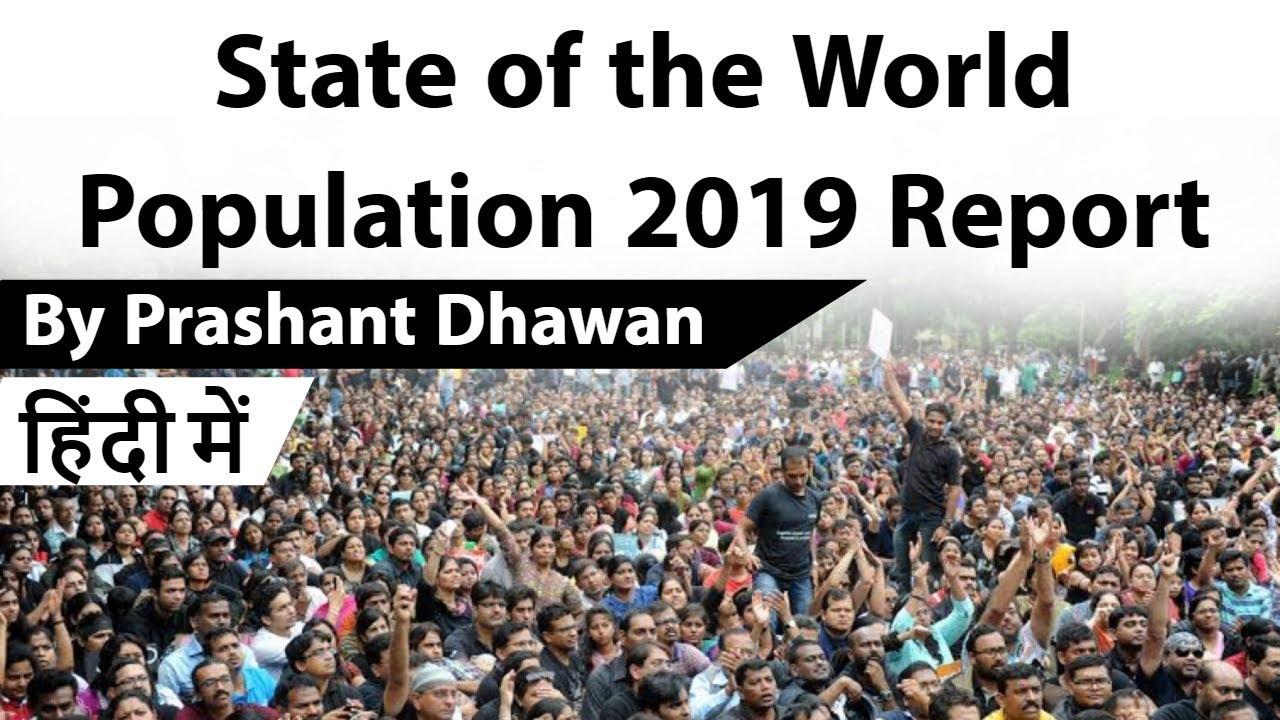Table of Contents

STATE OF THE WORLD POPULATION 2019
- State of the World Population 2019, the flagship report of the United Nations Population Fund (UNFPA), has been released.
- UNFPA is the United Nations sexual and reproductive health agency. It was established as a trust fund in 1967 and began operations in 1969. In 1987, it was officially renamed the United Nations Population Fund. However, the original abbreviation, UNFPA (United Nations Fund for Population Activities), was retained.
NOTES
- UNFPA is a subsidiary organ of the UN General Assembly. UNFPA is entirely supported by voluntary contributions of donor governments, intergovernmental organizations, the private sector, and foundations and individuals, NOT by the United Nations regular budget. UNFPA works directly to tackle Sustainable Development Goal 3 on health, Goal 4 on education and Goal 5 on gender equality.
AREAS OF WORK – UNFPA

REPORT FINDINGS
- According to State of World Population-2019 report by the United Nations Population Fund (UNFPA), India’s population grew at an average of 1.2% annually between 2010 and 2019 which is more than double the annual growth rate of China. India accounts for over one-sixth of the world’s population in 2019 (1.37 billion out of 7.71 billion). It has grown at a rate (1.2% per year between 2010 and 2019) that is just over the world growth rate (1.2%).
HIGHLIGHTS
- India’s population in 2019 stood at 1.36 billion. The population has grown from 942.2 million in 1994 and 541.5 million in 1969. China’s population stood at 1.42 billion in 2019. China’s population increased from 1.23 billion in 1994 and 803.6 million in 1969.
LIFE
- India’s life expectancy at birth is lower than the world’s (69 years to 72). India has recorded an improvement in life expectancy at birth. The life expectancy at birth in 1969 was 47 years, growing to 60 years in 1994 and 69 years in 2019. India’s fertility rate in 2019 is 2.3 births per woman, compared to 2.5 worldwide.
NOTES
- Top five most populous countries will look like the following in 2027: India – 1.5 billion. China – 1.1 billion. Nigeria – 733 million. United States – 434 million. Pakistan – 403 million.
WORLD
- Besides, the global population is projected to increase by 2 billion people by 2050 – from 7.7 billion in 2019 to 9.7 billion – in 30 years. The world population is expected to peak at 11 billion by the end of the century.
CAUSES?
- According to the analysis, the absence of reproductive and sexual rights has major and negative repercussions on women’s education, income and safety, leaving them “unable to shape their own futures”.
- Early marriage continues to remain an obstacle to female empowerment and better reproductive rights.
- The report highlights the threat to women’s and girls’ reproductive rights posed by emergencies caused by conflict or climate disasters.
FINDINGS
- However, at least 55 countries, including China, are expected to see a shrink in population by at least 1 percent by 2050, as per ‘The World Population Prospects 2019’ published by the Population Division of the UN Department of Economic and Social Affairs. In China, the population is projected to shrink by 2.2 percent or 31.4 million people.
THE WORLD IS GROWING OLDER
- The report also mentioned that the overall population of the world is ageing, with the age group ‘65 and above’ growing at a fast rate. By 2050, one in six people will belong to this group, instead of one in 11 in 2019.
Latest Burning Issues | Free PDF






















 WhatsApp
WhatsApp